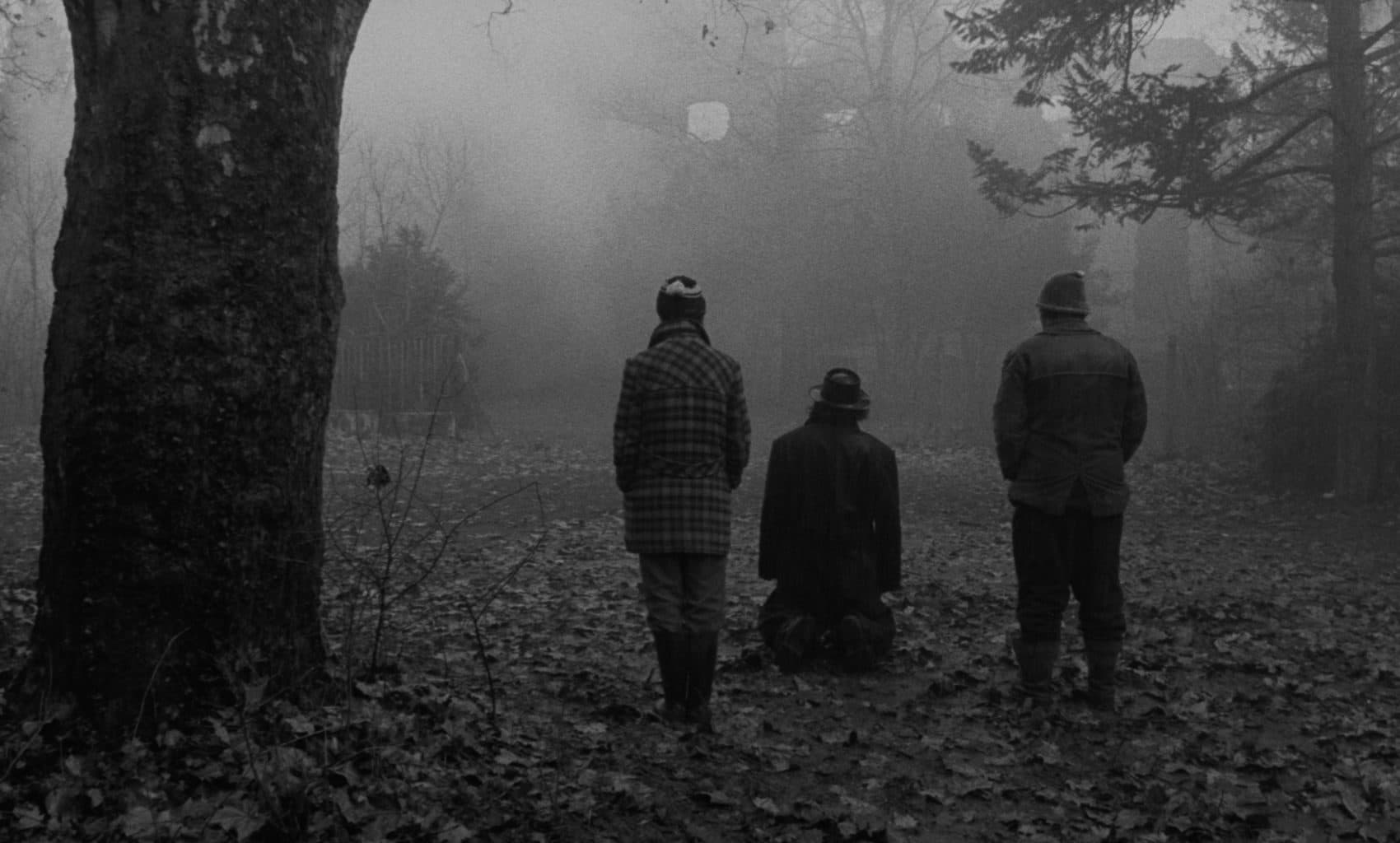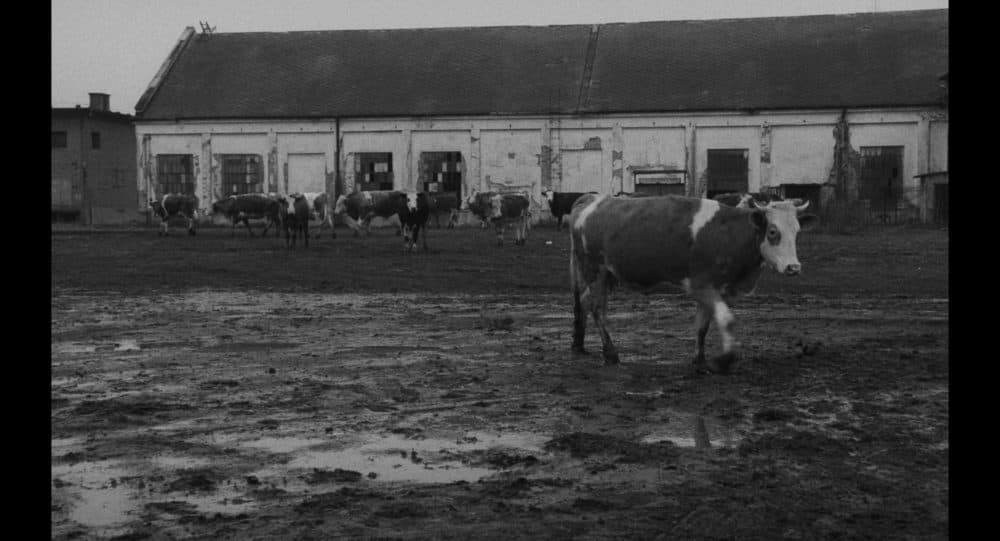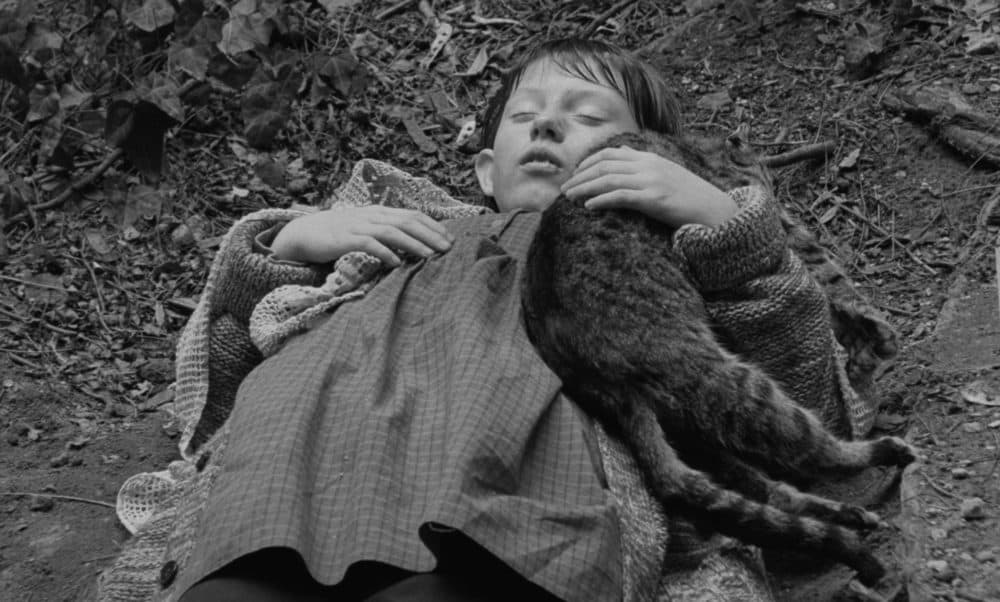Advertisement
Commentary
A Film More Talked About Than Seen, 'Sátántangó' To Screen At The MFA

The cinephile’s Mount Everest, director Béla Tarr’s massive, magisterial, 439-minute “Sátántangó” gets two rare screenings at the Museum of Fine Arts this weekend. This is one of the film events of the year, though admittedly not an undertaking for the faint of heart. Seldom shown and only fleetingly available on home video, the 1994 film was for the longest time a movie more talked about than seen. In hardcore cinema circles “Sátántangó” was something discussed in hushed, reverent tones, with fans like Susan Sontag saying she’d be glad to watch it once a year for the rest of her life, while folks traveled hundreds of miles to attend infrequent 35mm presentations of the movie in all its muddy, oppressive glory.
Logistics precluded many theatrical showings — for most venues, the 20-odd reels of film proved prohibitively expensive to ship, especially since the seven-and-a-half-hour running time limits exhibitors to a single showtime per day. According to my research, the last time “Sátántangó” came to the Boston area was a screening at the Harvard Film Archive in March of 2012. But now, in advance of a Blu-ray release slated for 2020, the film returns to celebrate its 25th anniversary in a stunning new 4K digital restoration from Arbelos Films, pristinely preserving every spatter of grime and muck in this doomed Hungarian bog town.
If you’re serious about exploring international cinema, at some point or another you’ve got to reckon with “Sátántangó.” And boy, is it a work to be reckoned with. At once spellbinding and infuriating, annoying and transcendent, it’s a movie that alternates between being mordantly hilarious and intensely, unutterably tragic. Shot in staggering, high-contrast black-and-white long takes that stretch out into eternities, “Sátántangó” bends your perception of time and turns monotony into an epiphany. The film’s opening shot is a full eight uninterrupted minutes of cows meandering their way through a dilapidated village and it’s one of the single greatest things I’ve ever seen.

Based on a novel by László Krasznahorkai, the movie chronicles in minute detail the unravelling of a desperately poor farming community upon the return of a mysterious prodigal son (Mihály Vig) the villagers had long presumed dead. A lot of interpretations like to claim this is all an allegory for the collapse of communism and capitalism’s rise in Eastern Europe, but the director is on record rejecting such readings, and personally, I consider the film’s insights into human behavior to be more depressingly universal than overtly political. (Those cows aren’t the only dumb herd animals we’re watching.)
Broken up into 12 discrete segments, the movie’s designed to mimic the structure of a tango — six steps forward and six steps back — so the events of the film are constantly doubling back upon themselves. Sometimes it’s a good long while before you realize you’re watching something you’ve already seen from another angle, other times chapter titles like “The Perspective from the Front” and “The Perspective from Behind” are more helpful in terms of getting your bearings. According to the director, there are only 150 shots in these entire seven-and-a-half hours, so between the temporal dislocation and durational excesses, the film feels like it’s rewiring your brain while you’re watching it.
When I was younger and jumpier I never used to have much patience for this kind of thing. Academics call it “slow cinema” and I wanted films to get on with things already. But now that our attention spans have atomized and the world is too much with us, I look at going to the movies as more like a form of meditation, a place where I can get out of my head and have somebody else’s dream for a little while. I don’t care so much about plot these days and look more for sensation and mood. As arduous an experience as “Sátántangó” may be, I can see why Susan Sontag wanted to watch it once a year. When it’s over you really feel like you’ve been somewhere.
“I'm always drawn to movies that make time evaporate,” says my old friend Matt Prigge, a former film critic for Metro and now an adjunct professor at NYU. Matt’s in the five-timers club for this film, and before moving to New York would travel great distances to see “Sátántangó” on a big screen. “People tend to single out the endless shots trailing people trudging through miserable hellscapes, but it has great variety,” he says. “Every chapter offers different ways to approach slow cinema. It's f---ing funny, too. Except when it absolutely isn't.”

Indeed, the movie’s most notorious sequence finds an abused and neglected young girl attempting to exhibit the only control of which she’s capable by torturing and poisoning her pet cat — the endpoint to a cycle of cruelty we’ve witnessed working its way down the town’s hierarchy until naturally it is the smallest, most helpless creatures that pay most dearly. (Despite urban legends to the contrary, Tarr insists the scene was shot under a veterinarian’s supervision and that kitty went on to live a long and happy life.)
Amid all the moldering rot, drunken boorishness and stupid, venal scheming, “Sátántangó” also offers us a glimpse of something infinite, a vastness of space and time within this small village that can only be experienced at such an obscene duration. Our story starts with a shot of the dawn slowly seeping in through a window until it eventually lights up in a dark room, only to end some seven hours or so later with a soused hermit boarding up his windows to block out the sun, slurring a repetition of the narration with which the film began. Six steps up and back again, the tango will go on until the cows come home.
“Sátántangó” screens at the Museum of Fine Arts on Saturday, Dec. 21 and Sunday, Dec. 22.
